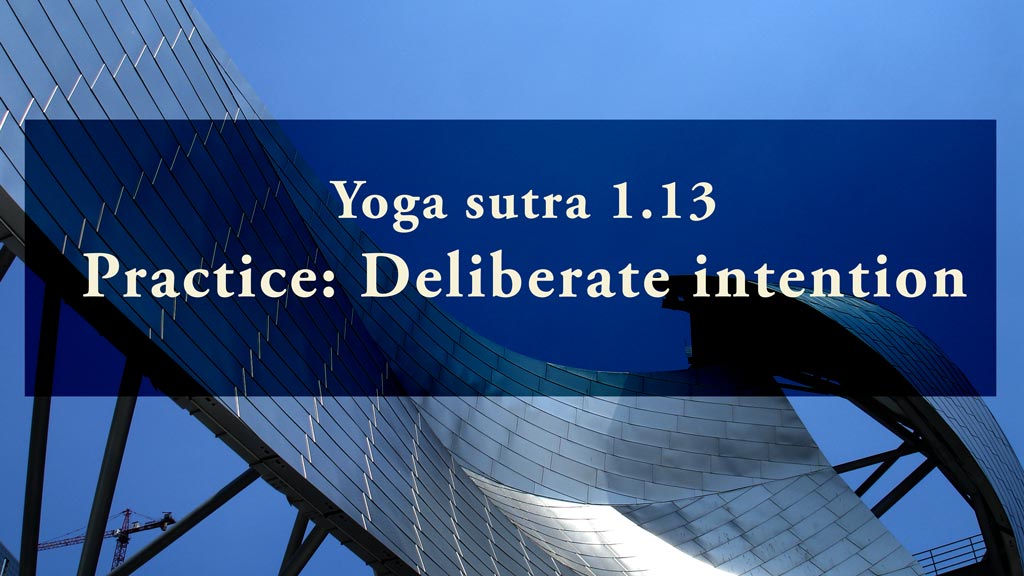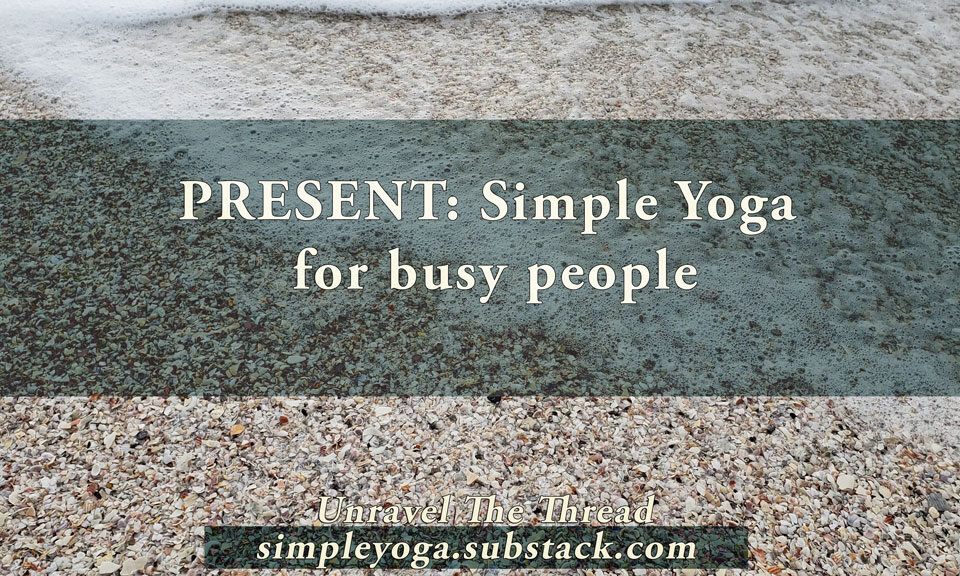
1.11 Memory
May 6, 2019
1.13: Practice: Deliberate intention
July 7, 2019
1.11 Memory
May 6, 2019
1.13: Practice: Deliberate intention
July 7, 20191.12: Practice and Release


1.12 Integration (samadhi) results from practice (abhyasa) AND freedom from attachments (vairagya).
After enumerating and explaining the five types of internal activities, Patañjali now offers a method to quiet them down. The method is a two-pronged approach for regulating your ways of being. It serves as a reminder that yoga is a dynamic dance articulating opposites into a fine balance between Being and Doing. This is a pervasive theme in the Yoga Sutra, appearing again in the suggestions for overcoming obstacles later in this chapter, in the definition of posture in Chapter Two, as well as in the definition of concentration (dharana) and meditation (dhyana) in Chapter Three. Verse 1.3 indicates that quieting down your ways of being enables you to embody your true nature. That true nature is characterized by a dynamic equilibrium between your different aspects. This is present throughout the natural world. For instance, a tree cannot survive if there is no balance between its sky-bound branches and its roots digging in the ground. There is a similar harmony between the complementary aspects of breathing, where the in-bound inhalation would be incomplete and ineffective without its corresponding exhalation. In the breathing process, each inspiration is a doing that brings air in, while each expiration is a letting go that releases what the body no longer needs. Our organism operates through many complementary processes like these: for instance, when some muscles shorten, other nearby muscles respond by lengthening. Our nervous system is constantly balancing out the outward orientation of the sympathetic nervous system with the inward orientation of the parasympathetic nervous system.
In this sutra, Patañjali recommends articulating the complementary processes of practice (abhyasa) and release (vairagya) to move towards a deep integration of all internal systems for living in harmony with everything that is. This strategy combines doing, practice (abhyasa), with being, letting go of attachments (vairagya).
In the definition of yoga in verse 1.2, the idea of self-regulation was introduced, the combined strategy in this verse offers a means for self-regulation. The first step is to notice your tendencies, the ways of being (vrttis) mentioned in 1.2 and explained in sutras 1.5 to 1.11. Keep in mind that anything you practice, even what you practice unconsciously, will become stronger. The practice (abhyasa) is to keep coming back to presence by attending consciously to the moment you are in. The ways of being will often generate distractions, pulling you away from presence. When that happens, you let go of attachments to the distracting ways of being. You also let go of attachments to the expected outcomes of your actions and, of course, you let go of self-judgment. This is vairagya. This strategy is encapsulated in an idea mentioned before, the practice is to keep coming back to presence without strain, without struggle, without self-judgment and with a friendly attitude that brings a gentle smile to your face. The combination of practice and detachment can be summarized as acting with gentle persistence.
This strategy is a practical and effective approach to self-regulation. It is one way of choosing a balance between doing and being. Awareness of your own tendencies (ways of being, or vrttis) makes the process easier and more effective. In fact, this is a gradual process of cultivating sensitivity to internal and external feedback to determine how much to do and how much to let go of. The feedback also indicates if what you are doing is working or not. Beware of the expectation that what worked before should work again in exactly the same way. This is seldom the case. Perhaps the only formula that will work every time is “Be present.” In practical terms, practice (abhyasa) is to align with your capacity for awareness, to respond to the specific situation that you are in, in the best way you can and then to be content with the results (vairagya), even when they are different from what you planned or expected.
Some questions for contemplation and for applying these ideas: What are you currently practicing? Of what you are practicing, how much is conscious and how much unconscious? What are your tendencies in what you practice, too much, just right, too little? What are you attached to? Do you take yourself too seriously? How do you balance out what you do with just being? To what extent do you try to manipulate the outside world to match your agenda? How do you know that you have found a point of equilibrium between being and doing?
As usual, you can explore with curiosity the direct experience of chanting this sutra.
You can choose to chant the traditional version:
अभ्यासवैराग्याभ्यां तन्निरोधः ॥१२॥
abhyāsavairāgyābhyāṃ tannirodhaḥ
or, you can chant each word individually:
- abhyāsa
- vairāgyābhyāṃ
- tat
- nirodhaḥ
Unravel the thread is now available as a book!
If you find Simple-Yoga.org and Unravel the thread useful, consider supporting my labor with a donation, you may also donate using PayPal or Venmo. Thank you!
